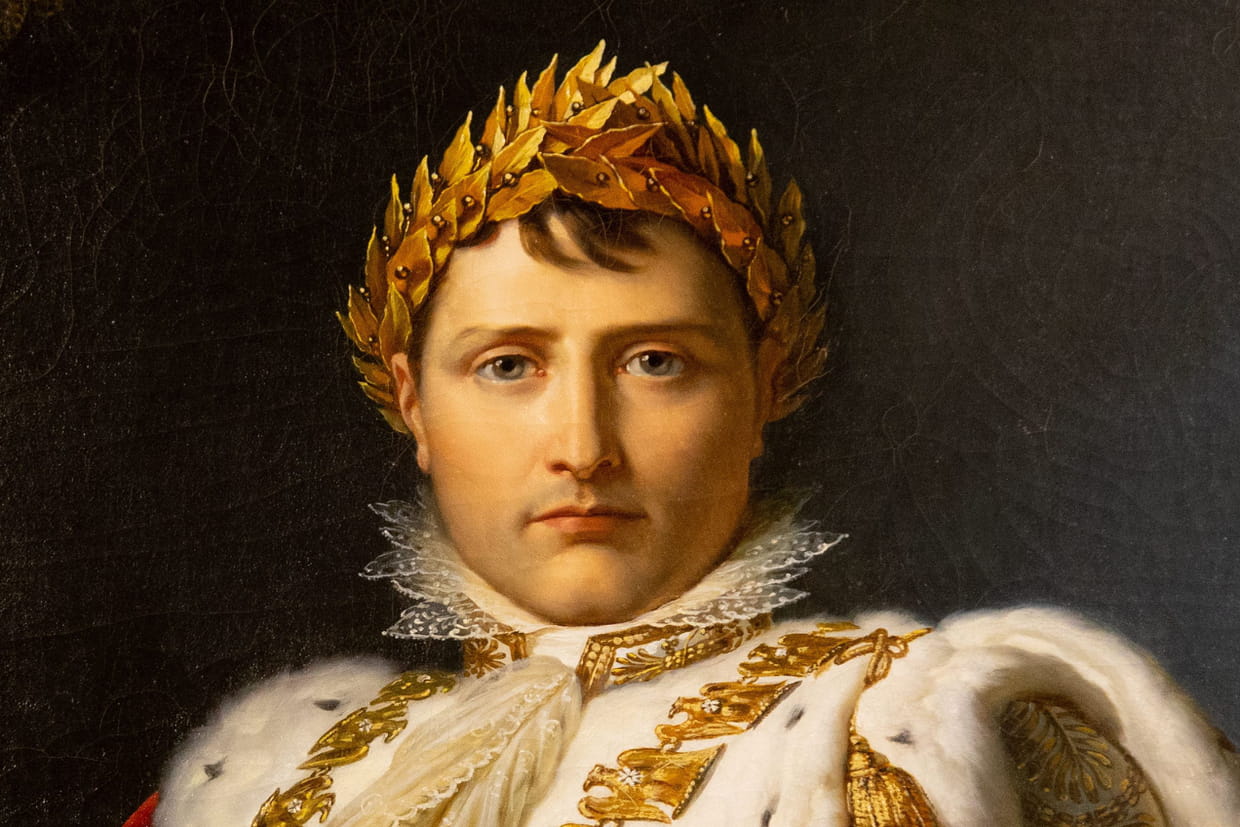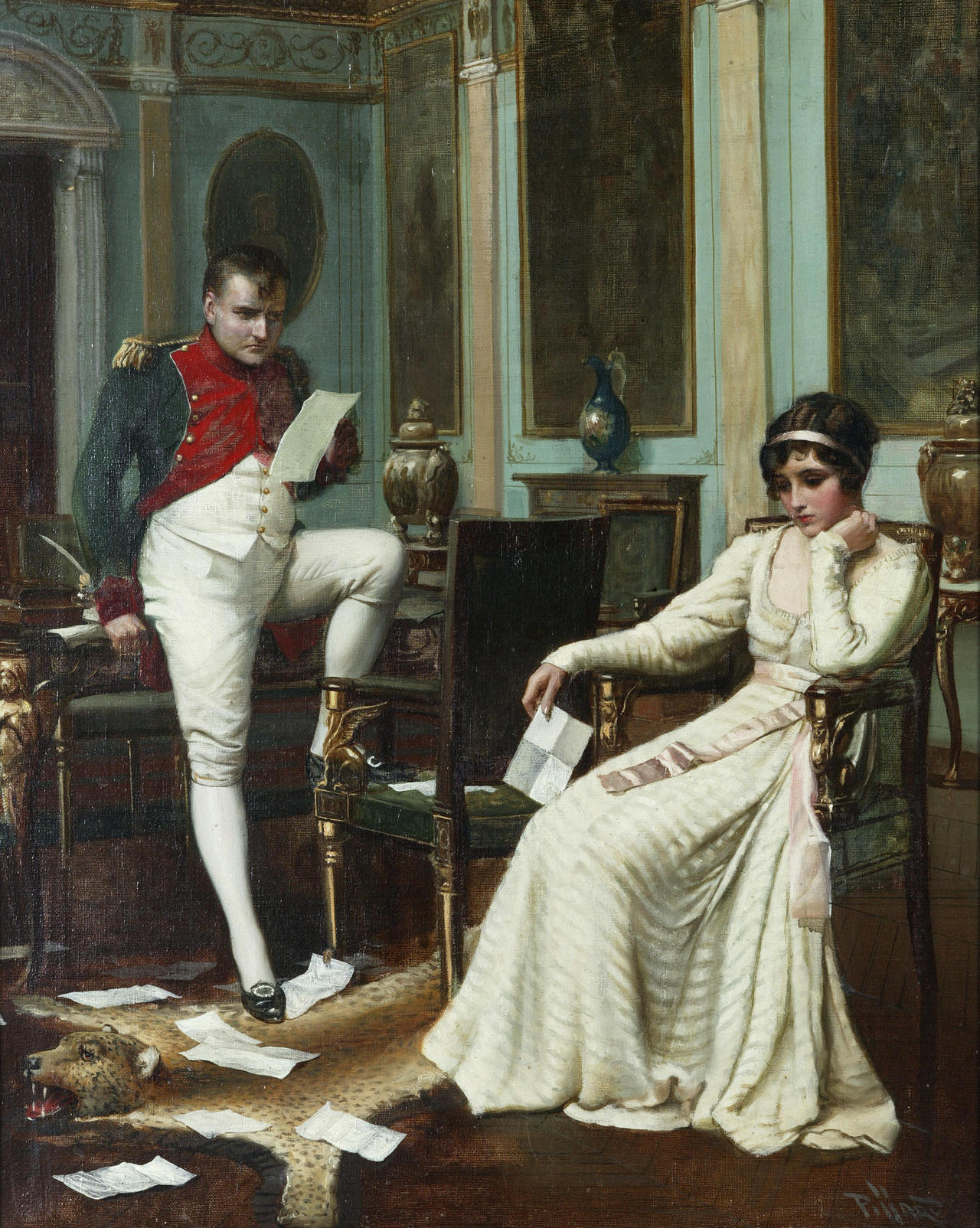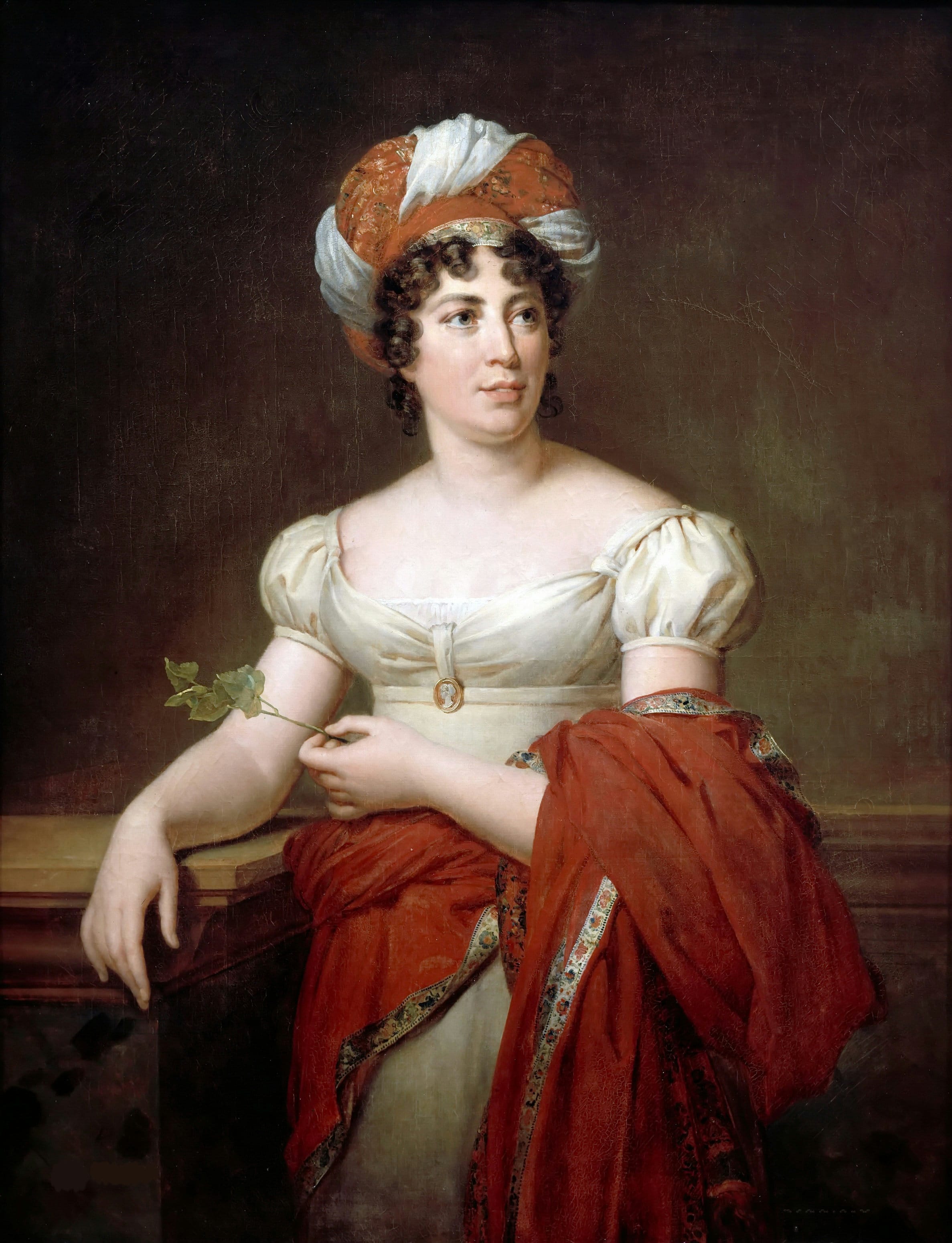The bicentenary year of the death of Napoleon Bonaparte has not yet been inaugurated as the controversy is already raging. What do we reproach the Emperor Napoleon I? Between black and golden legend, Bonaparte is a complex character, a historical object that it would be wrong to judge in the light of the present.
Are we aware of the influence Napoleon exerted on french lives on a daily basis? The Civil Code is undoubtedly the most immediate example, but the baccalaureate, the Legion of Honor and the Louvre as we know it today are Napoleonic works. The glory that this famous French figure – during his lifetime – on a world scale was so great that we still find it difficult to imagine it. It is undoubtedly this glory which is worth moreover to Napoleon so many criticisms: close enough to us and documented so that we can dare the comparison with our contemporary time but sufficiently distant so that it is tempting not to see anything other than the aura of the man who created his own myth. Napoleon Bonaparte did not have the glorious comforts of ancient heroes.
Napoleon Bonaparte and the restoration of slavery
The rise of Bonaparte is not the work of a single man. Neither did his rise to power. The coup d’état of 18 Brumaire Year VIII (November, 9th 1799) drew on the finances of businessmen as well-off as they were worried about the country’s political instability. Their support does not know philanthropy and naturally implies that they gain a voice in the decisions that will be taken subsequently. Once Napoleon Bonaparte appointed First Consul (20 Brumaire), requests for the reestablishment of slavery abolished in 1794 in the French colonies became regular and insistent. Until 1802, Bonaparte did not give in:
We must not take freedom from the men to whom we have given it.
Alas, he will end up going back on his words. Following the peace of Amiens in March 1802, France recovers its colonies of Martinique, Tobago and Saint Lucia. However, the abolitionist law of 1794 had not been applied either in Reunion – which had hampered its application – or in Martinique where a royalist insurrection had led to an agreement of submission to the English royalty before the latter conquered the island. .
The law of May 20th, 1802 concerns the territories which had not applied the abolitionist law of 1794. Thus, the territories recovered during the peace of Amiens were in theory not concerned by this law. Nevertheless, slavery was reestablished in Guadeloupe by a decree of July 16th, 1802 – the original of which, discovered in 2007 at the French National Archives, was presented on the occasion of an exhibition commemorating the bicentenary of the death of Napoleon I in 2021. The presentation of this document to the public for the first time is an important position taken to refine an often distorted or poorly understood dimension of Bonaparte’s reign and its consequences on human rights throughout the 19th century. In Guyana, slavery was reestablished in April 1803. General François-Dominique Toussaint Louverture (1743 – 1803), will participate in the independence of part of Santo Domingo which will become Haiti on January 1st, 1804.
The massacres perpetrated by French troops on black insurgents in Guadeloupe and Martinique to regain control are among the bloodiest acts of Bonaparte’s reign. Let us add that the abolition of slavery in France will have to wait until 1848 before being final. The beginnings of the reign of the future emperor thus make France the only country to have re-established slavery. A French cultural exception whose history would have gone well.
Napoleon Bonaparte, the misogynist?
The Ancien Régime aristocracy – the highest in particular – stood out in the 18th century as one of the few circles in which misogyny had little or no influence. The revolutionaries held it against them and the accusations wept. The reproaches were all found and the aristocrats to have effeminated, to have become weak as one imagined then the natural inclination of the women. Revolution in opposition to the Ancien Régime therefore wanted to be virile. Bonaparte, like all the men of his time, had no other idea of the masculine ideal: solid, strong and determined, adjectives deliberately removed from the feminine sphere too superficial and fragile to interfere with serious subjects. The exuberances of Les Merveilleuses at the end of the 18th century sound the death knell for a feminine presence accepted and admired outside the domestic space, a last jolt before a 19th century of feminism that appalling in the eyes of our young 21st century.
Once the Directory and even more the Empire were established, the nineteenth century pushed revolutionary virility further by drawing fairly firmly into male and female genders which, even at the beginning of the twentieth century, we had all the trouble in the world to get rid of.
The Civil Code, a famous work of the Napoleonic reign, then stands out in our eyes as the assumed and satisfied contemptor with the condition of women and contemporary opprobrium. And for good reason, the text does not have a feminist soul. Yet it would be perfectly anachronistic to imagine that the man of the beginning of the 19th century allowed Bonaparte to impose an idea of woman. Misogyny is neither pervasive nor new.
If a few very rare feminists made their voices heard during the French Revolution, it is perfectly unthinkable to imagine giving a woman the responsibilities of a politician. In this sense, Napoleon Bonaparte is no more misogynistic than his male contemporaries (but is undoubtedly more so than his female contemporaries). In drawing up the Civil Code, Bonaparte kept in mind his primary concern: to protect the family unit, the model of which was necessarily patriarchal. A delicious irony when you know the central and authoritarian place of Letizia (1750 – 1836) in the clan of the famous Corsican.
Man must therefore be at the center of the family, he is its central pillar. He is required to be respected and to protect women and children. The failings of the head of the family are legally reprehensible, but those of women are even more so. The Civil Code confines the woman in the place of a minor individual placed under the tutelage of her husband: “The husband owes protection to his wife, the woman obedience to her husband. The woman is considered “weak and dependent”, like a child. This is why the rights of women, if they are considered sacred, cannot be entrusted to her because her very nature does not allow a woman to exercise them reasonably. Jacques de Maleville (1741-1824), one of the drafters of the Civil Code, likes to remind women of the “feeling of their inferiority” and “the submission they owe to the man who will become the arbiter of their destiny. However, sad reassurance, a man cannot divorce a woman over the age of 45. A precaution that stems from the duties of the husband who are required to ensure the protection of his wife. There is no question therefore of abandoning the latter if by chance the desire took you to find the titillating sensations of youth.
Once again, let us note the irony which forces Napoleon I to circumvent his own law to marry Marie-Louise of Austria (1791 – 1847). The protection of children is also a concern which is important to Bonaparte and we have always inherited many of its provisions today.
For a man who judged the break-up of the family unit as a disorder harmful to the good running of society, his private life was the perfect counterexample, a total fiasco which is surprising and which reveals a large part of the ambivalence of the Napoleonic myth.
Married to a widow mother of two, he finally manages to divorce while Joséphine is 46 years old. His second wife Marie-Louise gave him a son who barely knew his father and who was left with terrible loneliness until his death at the age of 21. Two other children of Napoleon will live without ever being recognized by their father, then Bonaparte will die in Saint Helena, alone and without any member of his family by his side. The break-up of the family unit he feared so much could not be more complete.
So the Civil Code is, without doubt, severe with the female condition; but it is not an ideology personal to Napoleon Bonaparte. Because the fall of the Emperor does not announce improvements for women whose lower status is maintained under the Restoration.
Of course, some female voices contemporary with the Napoleonic work speak out against such considerations, but they are rare and require a certain social status to be heard. The rare women journalists, those “blue stocking” that men despise, try to make themselves heard in a journalistic and literary world entirely in the hands of men. The task is difficult and painful to say the least. Only the figure full of panache and the dazzling fame of Madame de Staël (1766 – 1817) is offended openly about what is inflicted on women. Her character and intelligence dissuaded even Napoleon from replying, he who said of her:
I have four enemies, Prussia, Russia, England and Madame de Staël.
May 5th, 2021 inaugurates the bicentenary of the death of Napoleon Bonaparte, who died in Saint Helena on May 5th, 1821. If criticism is raised everywhere as to the celebration or not of the death of this character and the commemoration of his influence in the history of France, divisive opinions still carry the debate to the confines of an absurdity which sometimes comes under artistic performance.
To commemorate does not mean blindly praising or shooting on sight. The virtue of the debates between historians and specialists in Napoleonic history with argued, documented and posed speeches are undoubtedly the best answers to bring in this year of commemoration. Everyone should be able to form an informed opinion on the historical reality of Napoleon Bonaparte, his reign and his influence still today in our lives. The numerous debates, works and exhibitions planned for this occasion will be the occasion, we hope, to initiate a true reflection on this character whose myth sometimes crushes the necessary nuance.
Marielle Brie de Lagerac
Marielle Brie de Lagerac est historienne de l’art pour le marché de l’art et l'auteure du blog « L'Art de l'Objet ».



